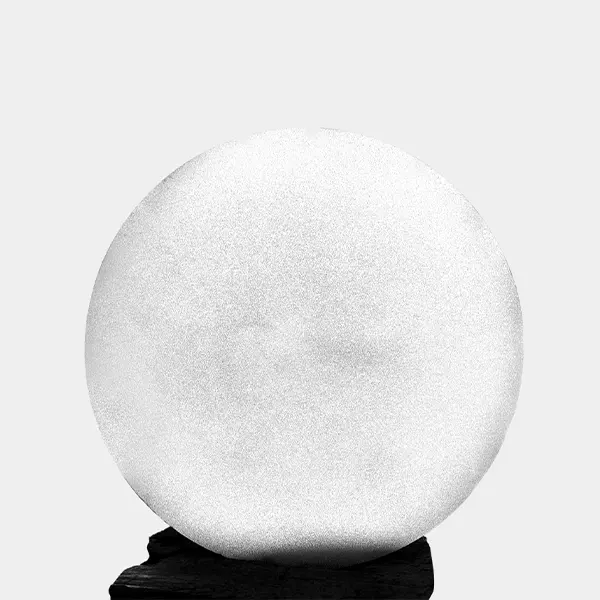Optical Grade
Optical-Grade Single Crystal Diamond: Unmatched Transparency for Extreme Photonics
Engineered for High-Power Lasers, UV-VIS Windows & Precision Optics
Core Value Proposition
We synthesize ultra-pure, single-crystal diamond substrates with >80% broadband transparency (UV to IR) – delivering near-theoretical optical performance for systems where material limits define breakthrough potential.
Technical Specifications
| Property | Specification | Competitive Edge |
| Transmission Efficiency | >80% UV-VIS (500 μm thickness) | Highest photon throughput per mm |
| Nitrogen Purity | <5 ppb (Type IIa) | Eliminates N-related absorption |
| Size Availability | Up to 30 × 30 mm (single crystal) | Large-area optics without brazing |
| Thickness Range | 100 μm – 2 mm (±5 μm tolerance) | Optimized for λ/4 waveplate to laser windows |
| Absorption Coefficient | <0.1 cm⁻¹ @ 10.6 μm (CO₂ laser wavelength) | Minimal thermal lensing |
Key Applications
High-Power CO₂ Lasers (10.6 μm)
Diamond output couplers & windows with <5 ppb nitrogen achieve:
- >95% transmission at 10.6 μm
- 3× higher damage threshold vs. ZnSe
- Active cooling to 500 W/cm² without distortion
UV-VIS-NIR Optics
Substrates for synchrotron beamlines, space optics, and AR/VR waveguides:
- VUV transmission down to 225 nm
- No birefringence-induced wavefront distortion
- Radiation-hard (space/MRI applications)
Thermal Management
Combining 2200 W/m·K thermal conductivity with optical transparency:
- Laser diode heat spreaders
- High-brightness LED sub mounts
- EUV lithography components

- Single Crystal up to 30 mm x 30 mm
- Polycrystalline up to 3 inch Diameter
- Transmission percentage: Up to 80 % (500 microns thick)
- Low Dislocation Density
- Thickness up to 12 mm
- Surface Roughness: < 5 nm RA
Are you interested in Optical Grade?
Why Nitrogen Control Matters in Optical Diamonds
At <5 ppb nitrogen:
- Eliminates GR1 absorption centers (550–800 nm)
- Prevents brown/gray tint in VIS spectrum
- Reduces 270 nm UV absorption by 90% vs. commercial IIa diamonds
- Enables multi-kW laser operation without carbonization
Manufacturing Excellence
Precision Surface Finish
Optical surfaces polished to:
- λ/10 flatness (633 nm)
- Ra < 0.5 nm roughness , < 0.3 nm also possible upon request.
- Custom AR/HR coatings (MgF₂, diamond-like carbon)
Material Certification
Every substrate includes:
- FTIR/UV-Vis-NIR transmission spectra
- Raman confirmation of crystal perfection
- LIDT (Laser-Induced Damage Threshold) testing per ISO 21254

Comparison vs. Alternatives
| Material | Max. Transmission @10.6 μm | Thermal Conductivity | LIDT (GW/cm²) |
| Supreme’s Diamond | >95% | 2200 W/m·K | 15–20 |
| ZnSe | 70% | 18 W/m·K | 0.5 |
| SiO₂ | 90% | 1.4 W/m·K | 5 |
Frequently Asked Questions (FAQs)
Why is diamond used for high-power lasers?
Diamond is the best material for lasers because it lets >95% of light pass through (even at high power) and stays cool due to its superior heat conductivity (2200 W/m·K). It lasts longer than materials like ZnSe.
How clear is optical-grade diamond?
Our diamond is >80% transparent from UV to infrared light. It has almost no nitrogen (<5 ppb), so it doesn’t block light like lower-quality diamonds.
What makes your diamond better for UV optics?
Most diamonds absorb UV light, but ours has <5 ppb nitrogen, reducing UV absorption by 90%. This makes it perfect for UV lenses, space optics, and synchrotron beamlines.
Can I get custom shapes and sizes?
Yes! We provide diamond optics in:
Sizes up to 30×30 mm (single crystal)
Thickness from 100 μm to 2 mm (±5 μm precision)
Special shapes like prisms, hemispheres, and laser windows.
How durable is diamond for lasers?
Our diamond handles 15–20 GW/cm² laser power (30x more than ZnSe) without damage. It also resists heat, radiation, and scratches, making it ideal for space and industrial lasers.
